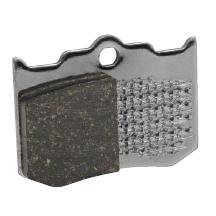It's just regular glue, right? Am trying to figure out why I have yet another pad showing it is missing glue. Maybe this pad was never glued in this corner?

Note, the pad has about 6mm of lining left. Obviously, it's about due to be replaced, due to rust anyhow (136kmiles, so it's aging out). I can probe around under the pad using a dental pick.
This is the rotor side of things.

Other side of the car isn't fairing much better on rust, but at least the linings are staying bonded:


Note, the pad has about 6mm of lining left. Obviously, it's about due to be replaced, due to rust anyhow (136kmiles, so it's aging out). I can probe around under the pad using a dental pick.
This is the rotor side of things.

Other side of the car isn't fairing much better on rust, but at least the linings are staying bonded:




